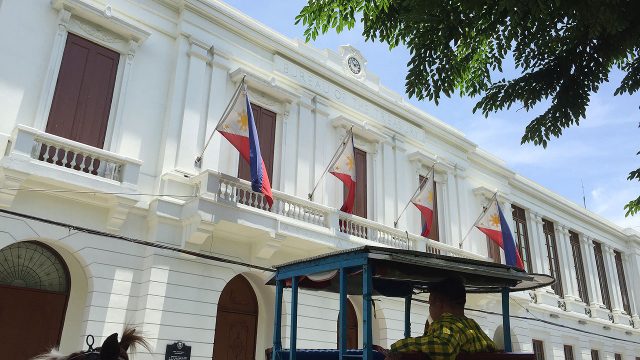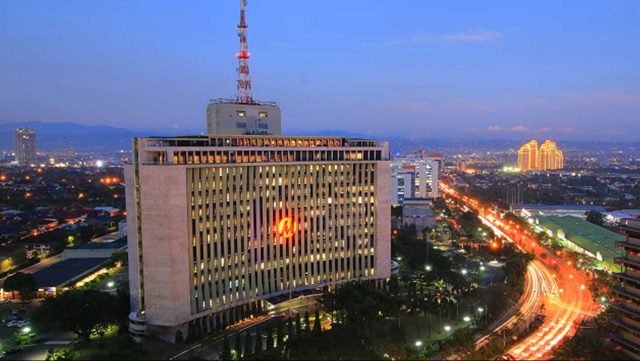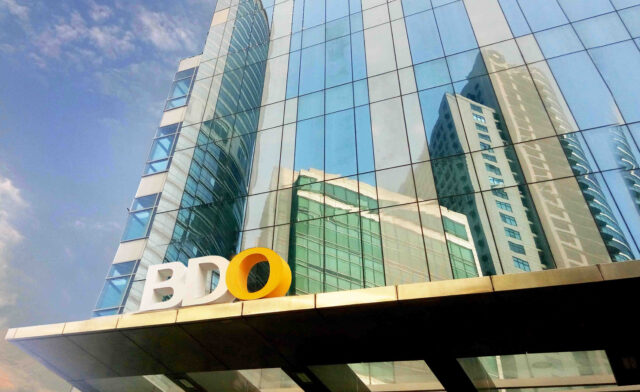Gov’t fully awards Treasury bill offer even as yields inch higher
THE GOVERNMENT made a full award of the Treasury bills (T-bills) it offered on Monday as all tenors’ average rates remained below secondary market levels despite rising slightly from the previous week.
The Bureau of the Treasury (BTr) raised P20 billion as planned from the T-bills it offered on Monday as total bids reached P43.185 billion, or more than twice the amount placed on the auction block.
Broken down, the BTr borrowed P6.5 billion as programmed from the 91-day T-bills as tenders for the tenor reached P14.18 billion. The three-month paper was quoted at an average rate of 5.698%, 1.2 basis points (bps) above the 5.686% seen last week. Accepted rates ranged from 5.65% to 5.724%.
The government likewise made a full P6.5-billion award of the 182-day securities, with bids reaching P15.56 billion. The average rate for the six-month T-bill stood at 5.968%, inching up by 0.9 bp from the 5.959% fetched last week, with accepted rates at 5.92% to 5.995%.
Lastly, the Treasury raised the planned P7 billion via the 364-day debt papers as demand for the tenor totaled P13.445 billion. The average rate of the one-year debt increased by 2.3 bps to 6.073% from the 6.05% quoted last week. Accepted yields were from 6.03% to 6.095%.
At the secondary market before the auction, the 91-, 182-, and 364-day T-bills were quoted at 5.7152%, 5.9669%, and 6.0848%, respectively, based on PHP Bloomberg Valuation (BVAL) Service Reference Rates data provided by the Treasury.
“Treasury bill average auction yields were again slightly higher week-on-week, but still slightly lower and already closer to the comparable short-term PHP BVAL yields, as consistent signals on possible local policy rate cut of 25 bps as early as August and possible 50 bps in rate cuts in 2024 led to some greater investor demand for longer-dated bonds and other fixed-income securities to lock in still relatively higher interest rates before the rate cuts happen,” Rizal Commercial Banking Corp. Chief Economist Michael L. Ricafort said in a Viber message.
Secondary market yields mostly went down last week as slower-than-expected June headline inflation strengthened the case for a Bangko Sentral ng Pilipinas (BSP) rate cut as early as August.
Philippine headline inflation rose 3.7% year on year in June, easing from 3.9% in May and 5.4% in the same month a year ago. This was below the 3.9% median estimate in a BusinessWorld poll of 14 analysts.
The June consumer price index (CPI) was within the BSP’s 3.4-4.2% forecast for the month, and also marked the seventh straight month that inflation settled within the central bank’s 2-4% annual target.
For the first six months, the CPI averaged 3.5%, slightly faster than the central bank’s 3.3% full-year forecast.
The BSP last month kept its policy rate at a 17-year high of 6.5% for a sixth straight meeting.
BSP Governor Eli M. Remolona, Jr. has said the Monetary Board may deliver its first rate cut in over three years at its Aug. 15 review — the only policy meeting scheduled in the third quarter — as they expect inflation to continue easing this semester.
The BSP may slash borrowing costs by 25 bps in the third quarter and by another 25 bps in the fourth quarter, he added.
On Friday, Mr. Remolona said the central bank may kick off its easing cycle by next month even if inflation exceeds the BSP’s 2-4% goal anew in July.
The central bank earlier said the CPI could pick up and overshoot their annual target from May to July amid a low base, but inflation remained below 4% in May and June.
“The awarded T-bill rates moved higher in anticipation ahead of US Federal Reserve Chair Jerome H. Powell’s US congressional testimony this week,” a trader added in an e-mail.
Mr. Powell is scheduled to deliver his semiannual monetary policy report to the US Congress on July 9-10.
On Tuesday, the BTr will offer P30 billion in reissued 20-year Treasury bonds (T-bonds) with a remaining life of seven years and nine days.
The Treasury is targeting to raise P215 billion from the domestic market this month, or P100 billion from T-bills and P115 billion via T-bonds.
The government borrows from local and foreign sources to help fund its budget deficit, which is capped at P1.48 trillion or 5.6% of gross domestic product for this year. — AMCS












